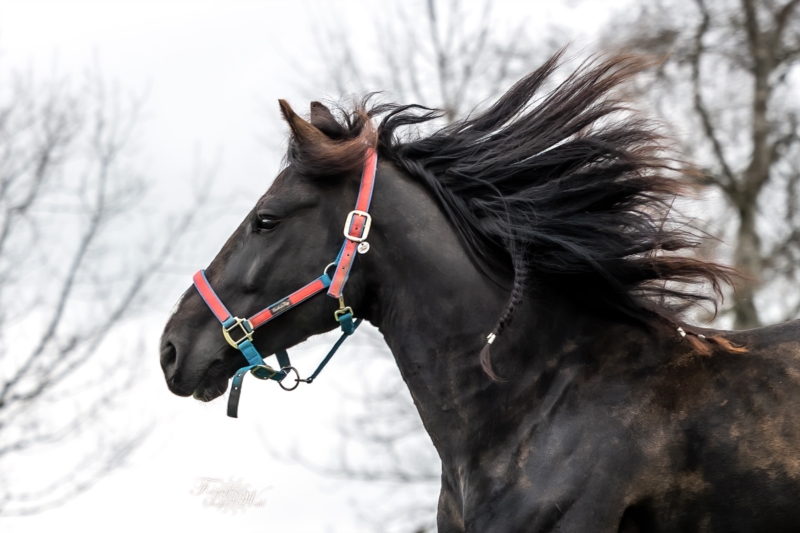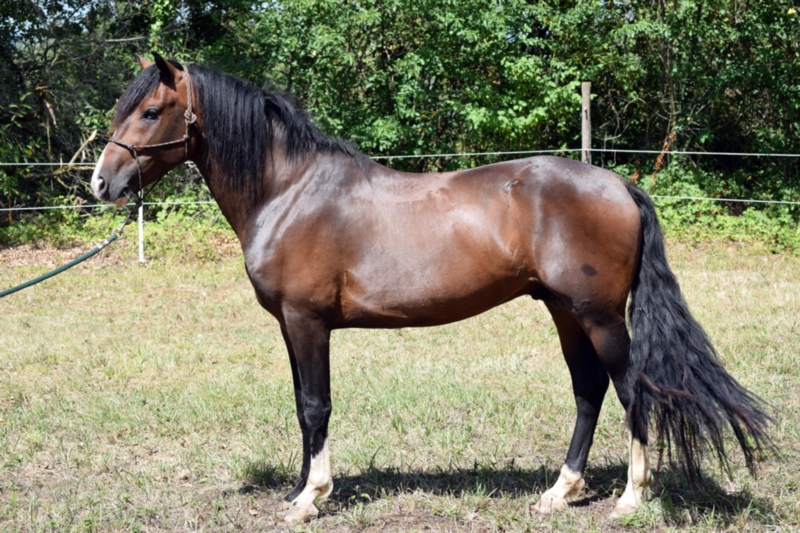Criollo Horses have a reputation for endurance and reliability, and it’s well-deserved. Two smart, intrepid Criollos certainly helped to put this resilient breed on the map. Their names were Mancha and Gato. They accompanied the famous long-distance rider Professor Aimé Félix Tschiffely on his 10,000-mile journey through South America to North America. These enduring animals were in their mid-teens when they set out, and survived for many years thereafter. The story of the Criollo Horse is as fascinating as that of Mancha and Gato, the long-distance horse heroes.
History and Origins
Criollos originated on the Pampas. This massive area of grassy plain extends over parts of Argentina, Brazil, Paraguay, and Uruguay in South America. Their ancestors were mostly Iberian breeds brought to the continent by Spanish and Portuguese settlers. These included Andalusians as well as local pony breeds from Spain and Portugal, such as the Sorraia and Garrano.
There may also have been Barbs, a breed originally from North Africa, which was popular in the Iberian Peninsula. The Barb also made an important contribution to the horse breeds of Spain, Portugal, and Italy. The story of the Criollo really begins with a shipment of horses from Spain, which arrived in 1535. Pedro de Mendoza, the founder of Buenos Aires, arranged for the shipment in order to develop his settlement there. Horses were essential to European culture and commerce.
They needed to be brought to the new colonies since, by this stage, America’s own horses had been extinct for several thousand years. Shipping horses was expensive and not always successful, as they suffered badly when at sea, and many died. A few brief years later, in 1540, the local Querandi people attacked Buenos Aires and the settlers abandoned their homes. Buenos Aires would not be resettled by Europeans for another 50 years. The horses that had been imported became feral animals, roaming the Pampas.
A Tough Life on the Pampas
Forced to cope with extreme climatic conditions, grass fires, drought, and predators, the horses became tough and wily. The Pampas, with its hundreds of miles of grass and shrubs, was a natural environment for them.
The grass is not rich, and drought years can reduce vegetation substantially, forcing the horses to roam widely in search of grazing and water. The hardiest survived, and their numbers increased until, at last, there were thousands roaming the plain. The Europeans returned and resettled, and both they and the local people began to view the horses as a useful resource. At first travelers in the vast lands of South America called the horses they saw baguals.
These were the animals that would form the foundation of the Argentine Criollo, as it is often known. As time passed, other breeds were introduced into South America. In Argentina, the Thoroughbred became particularly influential in creating the famous Argentine Polo Pony, a cross of the Criollo and the TB.
What kind of horse is a Criollo?
Given their mixed ancestry, they could be classified as warmbloods. Essentially, they are tough, reliable, horses.
Name and Breed Formation
Criollo is a Spanish word that was once used to describe not only animals but also people. It applied to those of Spanish ancestry who were not born in Spain but in either of the American continents. The Portuguese word Crioulo has a similar meaning. It took some time to gain general acceptance of the horses as a genuine breed.
However, in the twentieth century, enthusiasts such as Dr. Emilio Solanet worked to produce breed standards and recognition. An acquaintance of Tschiffely, Dr. Solanet encouraged him to use Criollos on his legendary ride. The rest is history. Those two wise animals helped their human to survive many a dangerous situation and proved the quality of the breed.

Criollos are usually very healthy horses that are very tough and carry their rider over long distances.
Criollo horses – Conformation
Criollos are not tall horses, averaging around 14.3 hands high (59 inches/150 cm) and weighing around 545 kg/1200 lb to 590 kg/1300 lb. They are exceptionally strong and muscular. Their shape is compact and powerful, with strong legs and a long stride. The heads are small with refined features. Their faces tend to be convex, and it has been argued that they closely resemble the Sorraia pony breed. Modern Criollos show less tendency to the facial convexity of their ancestors. There was much dispute during the creation of the breed standards.
It was felt by some that the introduction of coach and draft horses, as well as the Thoroughbred, had not been beneficial to the hardy horses of the Pampas. Dr. Solanet argued for the establishment of a stock type of horse, similar to the Chilean Horse, which he admired. This was eventually the template that produced the modern Criollo. Controversially, some 75% of animals in the registry that did not meet the new standard were culled in 1938. Dun, often with a dorsal stripe, is a popular color. Many other colors are known, including brown, black and bay, chestnut, grullo, and buckskin. Roans, grays, and overo coat colors are also a feature of the breed. They have a full mane and tail.
Video of Criollo
Are Criollo Horses gaited?
Some are gaited, particularly those from Brazil.
Characteristics of Criollos
The primary quality of the breed is toughness. This has been proven many times. The best-known and frequently cited example is Tschiffely’s ride in the 1920s. There were other occasions before this when the remarkable endurance of the horses of the Pampas was tested. In 1767, an official rode 3,000 miles from Buenos Aires to Lima in Peru, averaging 75 miles per day. He rode many horses on this route.
Sometimes the same horse would be required to travel a long distance between one exchange and another, over rugged mountains or across deserts. In the early 1800s, Major Corvalan is said to have averaged 133 miles each day on a journey from Buenos Aires to the Andes on a single horse! A Criollo horse, Sufridor, is credited as having traveled the furthest distance in a single journey of any horse.
As well as having great powers of endurance, the Criollo is an agile horse that makes an excellent reining and cow pony. Their basic temperament is sensible and reliable, too. They tend to be long-lived animals. Gato died at the great age of 36, and his companion Mancha was 40 when he died. Their remains were placed on display in a museum.

Criollos are not tall horses, averaging around 14.3 hands high (59 inches/150 cm) and weighing around 545 kg/1200 lb to 590 kg/1300 lb
Breeding and Uses
Criollos are outstanding stock horses ridden by the gauchos of South America. They are living proof that a small horse in the right job is just as valuable as a tall one. Their endurance enables them to carry a rider for long hours across cattle country. Modern breeders participate in organized endurance rides to prove the quality of their stock.
The horses also take part in the paleteada, a rodeo-style event in which two riders control a steer at a gallop along a designated route 60 m (200 ft) long. As well as being great polo ponies, they make excellent general-purpose riding horses. Different types have emerged in each of the countries of the Pampas, including gaited horses.
What are Criollo Horses used for?
Criollos make great endurance mounts, all-around riding horses, cow ponies, and polo ponies.
Criollo Horses – Health and Behavior
This breed is one of the healthiest horses on the planet. Tough, enduring, and easy to keep, the horses thrive on basic grazing and their needs are very simple. Their temperaments are generally very willing.

